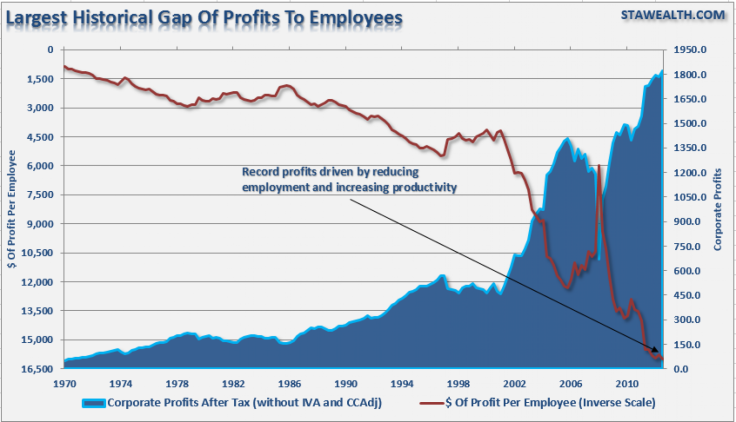Five Facts About The Minimum Wage To Arm You For Your Part In The Hot New National Debate (MCD) (WEN) (WMT)

With fast-food workers in about 130 U.S. cities striking Thursday for a fair, living wage and for the right to unionize -- only the latest in a series of such strikes in several months -- the minimum-wage issue has moved to the forefront of the national discussion. Here are five facts from Pew Research to arm you for your part in the dialogue.
(The Pew report is published here in its entirety.)
A one-day strike by fast-food workers in 100 cities set for Thursday, along with protests planned in 100 more, is refocusing attention on efforts to raise wages for the lowest-paid U.S. workers.
Congressional Democrats are pushing a bill that would gradually raise the federal minimum to $10.10/hour from $7.25 and index it to the Consumer Price Index. But the measure faces little chance of passing the Republican-led House, where many members argue that a higher minimum wage would lead businesses to cut jobs.
Meanwhile, states and cities are taking up the issue. On Tuesday, the Washington, D.C. City Council voted to raise the capital city’s minimum wage to $11.50/hour from $8.25 by 2016. Last month, New Jerseyans voted to raise their state’s minimum wage to $8.25/hour and index future increases to inflation. Massachusetts’ state Senate voted last month to raise its hourly minimum wage to $11.00 from $8.00.
Though raising the minimum wage is broadly popular, there are clear partisan differences. Back in February, a Pew Research Center survey found that 71% of people favored an increase in the federal minimum to $9.00/hour from $7.25. But while large majorities of Democrats (87%) and independents (68%) said they favored such an increase, Republicans were split.
Here are five more facts about the minimum wage and the people who earn it:
1. Adjusted for inflation, the federal minimum wage peaked in 1968 at $8.56 (in 2012 dollars). Since it was last raised in 2009, to the current $7.25/hour, the federal minimum has lost about 5.8% of its purchasing power to inflation.
2. Just over half (50.6%) of the 3.55 million U.S. workers who were at or below the federal minimum last year are ages 16 to 24; an additional 20.3% are ages 25 to 34 (both shares have stayed more or less constant over the past decade). That 3.55 million represents about 2.8% of all wage and salary workers. (We wrote more about the demographics of minimum-wage workers back in July.)
3. Nineteen states (plus D.C.) have set their own, higher minimums, ranging from $7.35 in Missouri to $9.19 in Washington State. (Some cities and counties have gone even higher — San Francisco’s minimum wage, for example, is set to rise 19 cents to$10.74 next month.) Those states collectively include 45% of the nation’s working-age (16 and over), meaning the federal demographic data don’t capture a significant share of the nation’s lowest-paid workers. Fortunately, there are other approaches.
4. Nearly 21.3 million U.S. workers (or 16.4% of the workforce) would be directly affected by raising the minimum wage to $10.10 by July 2015, as the Senate bill referred to above seeks to do, according to analysis of microdata from the Current Population Survey by the Employment Policy Institute (a labor-backed research group that supports raising the minimum wage). 85.5% of those workers, according to EPI’s analysis, are 20 or older; 57.3% are female; and 39.4% are black or Hispanic (versus 26.8% of the workforce as a whole).
5. While not strictly minimum-wage workers, almost 23.2 million Americans (17.8% of all wage and salary workers) worked in the nation’s lowest-paid occupations as of last year, according to Pew Research Center analysis of occupational employment and wage data from the Bureau of Labor Statistics. Those occupations, defined as paying $10.15/hour ($21,112/year) or less, were largely in a few categories: retail salespeople (4.3 million), cashiers (3.3 million), food preparers/servers, including fast-food workers (2.9 million) and waitstaff (2.3 million).
© Copyright IBTimes 2024. All rights reserved.





















